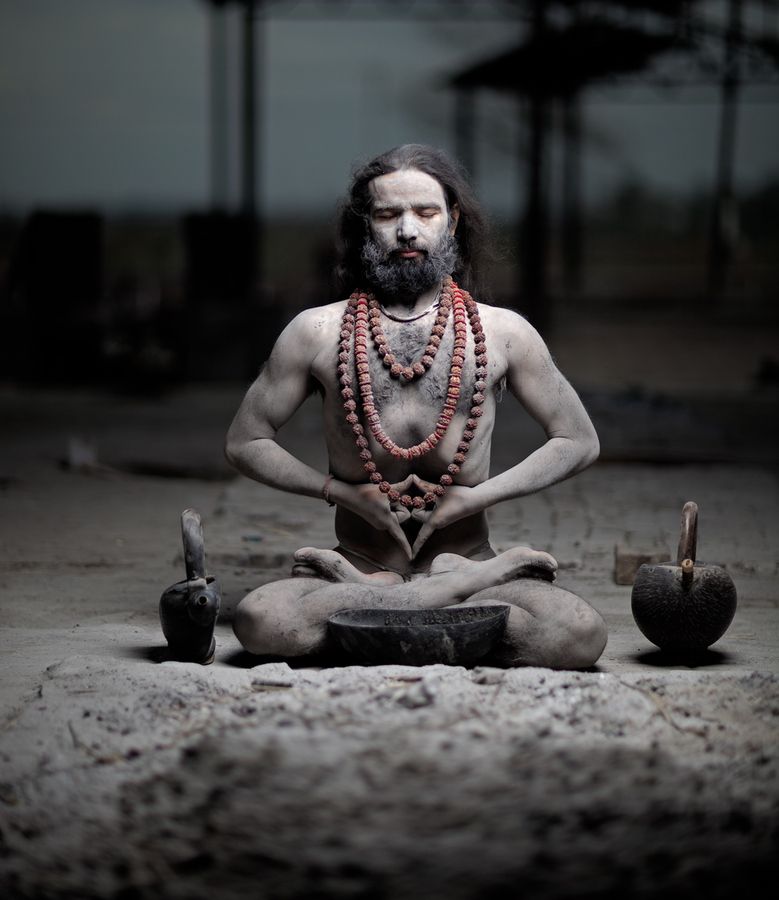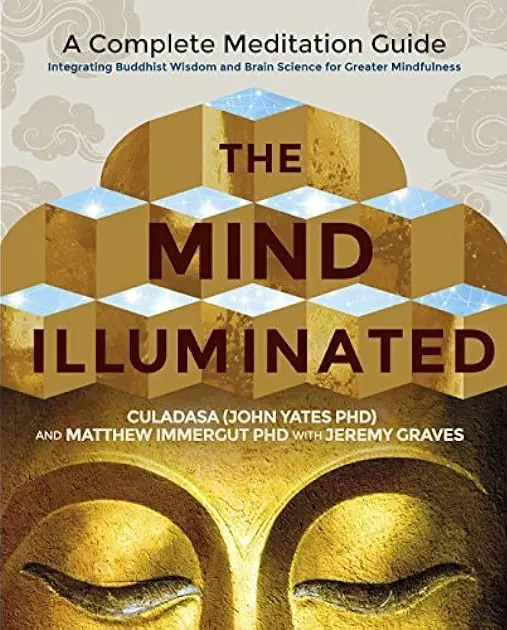2- An Overview of the Ten Stages

With a more detailed focus on the first Thee stages
along with the elements required to master them.
At every Stage, all “ you ” really do is patiently and persistently
hold intentions to respond in specific ways to whatever happens during your meditation.
Setting and holding the right intentions is what’s essential.
If your intention is strong, the appropriate responses will occur,
and the practice will unfold in a very natural and predictable way .
While useful, the lists of goals, obstacles, skills, and mastery provided in this discussion so far
can obscure just how simple the underlying process really is:
Intentions lead to mental actions, and repeated mental actions become mental habits.
This simple formula is at the heart of every Stage.

What you need is a regular daily sitting practice of one to two hours per day.
Diligent daily meditation, combined with occasional longer periods of practice,
will be enough for success.
Regardless of your natural abilities, you absolutely must master
Stage One, “Establishing a Practice,” to make progress.
Life factors and stressful events can also affect the process.
Losing your job, the death of a spouse, or a health problem
can set even an advanced meditator back to the earliest Stages.
In fact,
almost anything that happens outside of meditation can potentially have this effect.
This just serves as another reminder that meditative accomplishments, like everything else,
depend on certain conditions, and can therefore be influenced by worldly events.
We can only experience the full benefits of the Practice
if the wisdom we acquire permeates every facet of our life,
and that takes work…
It must become your Highest Desire… Then it becomes…
no work at all.
Ultimately… There comes a point in the Practice that…
Nothing is done… yet, Nothing is left UN done… as in the
Effortless Effort… the Practice-less Practice.
~
Here, I briefly describe each Stage’s distinct
characteristics, goals, challenges, and the techniques
for achieving those goals and working through those challenges.
Four particularly significant achievements
divide the Ten Stages into four distinct parts:
One through Three are the Stages of a novice;
(These are the stages this series of articles will highlight)
Four through Six are the Stages of a skilled meditator;
Seven is a transition Stage; and
Eight through Ten are the Stages of an adept.
It is helpful to think of each Stage in terms of the Milestone that lies ahead.
STAGE ONE:
ESTABLISHING A PRACTICE
This Stage is about developing a consistent and diligent meditation practice.
Being consistent means setting a clear daily schedule for when you’re going to meditate,
and sticking to it except when there are circumstances beyond your control.
Diligence means engaging wholeheartedly in the practice rather than
spending your time on the cushion planning or daydreaming.
Goals:
Develop a regular meditation practice.
Obstacles:
Resistance, procrastination, fatigue, impatience, boredom, lack of motivation.
Skills:
Creating practice routines, setting specific practice goals, generating strong motivation,
cultivating discipline and diligence.
Mastery:
Never missing a daily practice session.
STAGE TWO:
INTERRUPTED ATTENTION AND OVERCOMING MIND – WANDERING
Stage Two involves the simple practice of keeping your attention on the breath.
This is easier said than done.
You will discover that attention is easily captured by a distraction,
making you forget that you’re supposed to be paying attention to the breath.
Forgetting quickly leads to mind – wandering, which can last a few seconds, several minutes, or
the entire meditation session.
This sequence is so important it’s worth committing to memory
the untrained mind produces distractions that lead to forgetting,
which results in mind – wandering.
In Stage Two,
you only work with the last event — mind – wandering.
Goals:
Shorten the periods of mind – wandering and
extend the periods of sustained attention to the meditation object.
Obstacles:
Mind – wandering, monkey – mind, and impatience.
Skills:
Reinforcing spontaneous introspective awareness and
learning to sustain attention on the meditation object.
Spontaneous introspective awareness is the “aha” moment when you
suddenly realize there’s a disconnect between what you wanted to do (watch the breath)
and what you’re actually doing ( thinking about something else ).
Appreciating this moment causes it to happen faster and faster, so
the periods of mind – wandering get shorter and shorter.
Mastery:
You can sustain attention on the meditation object for minutes,
while most periods of mind – wandering last only a few seconds.
STAGE THREE:
EXTENDED ATTENTION AND OVERCOMING FORGETTING
Stages Two and Three are similar, but
mind – wandering gets shorter and shorter until it stops altogether.
The biggest challenge during this Stage is forgetting, but
sleepiness often becomes a problem as well.
Goals:
Overcome forgetting and falling asleep.
Obstacles:
Distractions, forgetting, mind – wandering, and sleepiness.
Skills:
Use the techniques of following the breath and connecting to
extend the periods of uninterrupted attention, and
become familiar with how forgetting happens.
Cultivate introspective awareness through the practices of labeling and checking in.
These techniques allow you to catch distractions before they lead to forgetting.
Mastery:
Rarely forgetting the breath or falling asleep.

MILESTONE ONE:
CONTINUOUS ATTENTION TO THE MEDITATION OBJECT
The first Milestone is continuous attention to the meditation object,
which you achieve at the end of Stage Three.
Before this, you’re a beginner — a person who meditates, rather than a skilled meditator.
When you reach this Milestone,
you’re no longer a novice, prone to forgetting, mind – wandering, or dozing off.
By mastering Stages One through Three,
you have acquired the basic, first – level skills on the way to stable attention.
You can now do something that no ordinary, untrained person can.
You will build on this initial skill set over the course of the next three Stages
to become a truly skilled meditator.
The Skilled Meditator — Stages Four through Six STAGE FOUR:
CONTINUOUS ATTENTION AND OVERCOMING GROSS DISTRACTION AND STRONG DULLNESS
You can stay focused on the breath more or less continuously, but
attention still shifts rapidly back and forth between the breath and various distractions.
Whenever a distraction becomes the primary focus of your attention,
it pushes the meditation object into the background.
This is called gross distraction.
But when the mind grows calm, there tends to be another problem,
strong dullness.
To deal with both of these challenges,
you develop continuous introspective awareness to alert you to their presence.
Goal:
Overcome gross distraction and strong dullness.
Obstacles:
Distractions, pain and discomfort, intellectual insights, emotionally charged visions and memories.
Skills:
Developing continuous introspective awareness allows you to
make corrections before subtle distractions become gross distractions, and
before subtle dullness becomes strong dullness.
Learning to work with pain.
Purifying the mind of past trauma and unwholesome conditioning.
Mastery:
Gross distractions no longer push the breath into the background, and
breath sensations don’t fade or become distorted due to strong dullness.
STAGE FIVE:
OVERCOMING SUBTLE DULLNESS AND INCREASING MINDFULNESS
You have overcome gross distractions and strong dullness, but
there is a tendency to slip into stable subtle dullness.
This makes the breath sensations less vivid and causes peripheral awareness to fade.
Unrecognized, subtle dullness can lead you to overestimate your abilities
and move on to the next Stage prematurely, which leads to concentration with dullness.
You will experience only a shallow facsimile of the later Stages,
and your practice will come to a dead end.
To overcome subtle dullness,
you must sharpen your faculties of attention and awareness.
Goal:
To overcome subtle dullness and increase the power of mindfulness.
Obstacles:
Subtle dullness is difficult to recognize, creates an illusion of stable attention,
and is seductively pleasant.
In fact…
There is a fine line between
“Letting go” and “surrender” into the higher states of consciousness
and actually falling asleep :-O
Skills:
Cultivating even stronger and more continuous introspective awareness
to detect and correct for subtle dullness.
Learning a new body – scanning technique
to help you increase the power of your mindfulness.
Mastery:
You can sustain or even increase the power of your mindfulness during each meditation session.
STAGE SIX: SUBDUING SUBTLE DISTRACTION
Attention is fairly stable but still alternates between
the meditation object and subtle distractions in the background.
You’re now ready to bring your faculty of attention to a whole new level
where subtle distractions fall away completely.
You will achieve exclusive attention to the meditation object,
also called single – pointed attention.
Goal:
To subdue subtle distractions and develop metacognitive introspective awareness.
Obstacles:
The tendency for attention to alternate to the continuous stream of distracting thoughts
and other mental objects in peripheral awareness.
Skills:
Defining your scope of attention more precisely than before, and
ignoring everything outside that scope until subtle distractions fade away.
Developing a much more refined and selective awareness of the mind itself,
called metacognitive introspective awareness.
You will also use a method called
“experiencing the whole body with the breath”
to further subdue potential distractions.
Mastery:
Subtle distractions have almost entirely disappeared, and
you have unwavering exclusive attention together with vivid mindfulness.

MILESTONE TWO:
SUSTAINED EXCLUSIVE FOCUS OF ATTENTION
With mastery of Stages Four through Six,
your attention no longer alternates back and forth
from the breath to distractions in the background.
You can focus on the meditation object to the exclusion of everything else, and
your scope of attention is also stable.
Dullness has completely disappeared,
and mindfulness takes the form of a powerful metacognitive introspective awareness.
That is,
you’re now aware of your state of mind in every moment,
even as you focus on the breath.
You have accomplished the two major objectives of meditative training:
stable attention and powerful mindfulness.
With these abilities you’re now a skilled meditator,
and have achieved the second Milestone.
~
The Transition
STAGE SEVEN:
EXCLUSIVE ATTENTION AND UNIFYING THE MIND
You can now investigate any object with however broad or narrow a focus you choose.
But you have to stay vigilant and make a continuous effort to
keep subtle distractions and subtle dullness at bay.
Goal:
Effortlessly sustained exclusive attention and powerful mindfulness.
Obstacles:
Distractions and dullness will return if you stop exerting effort.
You must keep sustaining effort until exclusive attention and mindfulness become automatic,
then
effort will no longer be necessary.
Boredom, restlessness, and doubt tend to arise during this time.
Also,
bizarre sensations and involuntary body movements can distract you from your practice.
Knowing when to drop all effort is the next obstacle.
But making effort has become a habit, so it’s hard to stop.
Methods:
Practicing patiently and diligently
will bring you to the threshold of effortlessness.
It will get you past all the boredom and doubt,
as well as the bizarre sensations and movements.
Purposely relaxing your effort from time to time will let you know
when effort and vigilance are no longer necessary.
Then you can work on letting go of the need to be in control.
Various Insight and jhāna practices add variety at this Stage.
Mastery:
You can drop all effort,
and the mind still maintains an unprecedented degree of stability and clarity.

MILESTONE THREE:
EFFORTLESS STABILITY OF ATTENTION
The third Milestone is marked by effortlessly sustained exclusive attention
together with powerful mindfulness.
This state is called mental pliancy,
and occurs because of the complete pacification of the discriminating mind,
meaning mental chatter and discursive analysis have stopped.
Different parts of the mind are no longer so resistant or preoccupied with other things,
and diverse mental processes begin to coalesce around a single purpose.
This unification of mind means that, rather than struggling against itself,
the mind functions more as a coherent, harmonious whole.
You have completed the transition from
being a skilled meditator to an adept meditator.
~
The Adept Meditator—Stages Eight through Ten
STAGE EIGHT:
MENTAL PLIANCY AND PACIFYING THE SENSES
With mental pliancy, you can effortlessly sustain exclusive attention and mindfulness, but
physical pain and discomfort still limit how long you can sit.
The bizarre sensations and involuntary movements that began in Stage Seven
not only continue, but may intensify.
With continuing unification of mind and complete pacification of the senses,
physical pliancy arises, and these problems disappear.
Pacifying the senses doesn’t imply going into some trance.
It just means that the five physical senses, as well as the mind sense,
temporarily grow quiet while you meditate.
Goal:
Complete pacification of the senses and the full arising of meditative joy.
Obstacles:
The primary challenge is not to be distracted or distressed by
the variety of extraordinary experiences during this Stage:
unusual, and often unpleasant, sensations, involuntary movements,
feelings of strong energy currents in the body, and intense joy.
Simply let them be.
Method:
Practicing effortless attention and introspective awareness
will naturally lead to continued unification, pacification of the senses, and
the arising of meditative joy.
Jhāna and other Insight practices are very productive as part of this process.
Mastery:
When the eyes perceive only an inner light,
the ears perceive only an inner sound,
the body is suffused with a sense of pleasure and comfort , and
your mental state is one of intense joy.
With this mental and physical pliancy,
you can sit for hours without dullness, distraction, or physical discomfort.
Method:
Becoming familiar with meditative joy through continued practice until …
the excitement fades, replaced by tranquility and equanimity .
Mastery:
Consistently evoking mental and physical pliancy,
accompanied by profound tranquility and equanimity.
STAGE TEN:
TRANQUILITY AND EQUANIMITY
You enter Stage Ten with all the qualities of Samatha:
effortlessly stable attention, mindfulness, joy, tranquility, and equanimity.
At first these qualities immediately fade after the meditation has ended.
But as you continue to practice,
they persist longer and longer between meditation sessions.
Eventually they become the normal condition of the mind.
Because the characteristics of śamatha never disappear entirely,
whenever you sit on the cushion, you quickly regain a fully developed meditative state.
You have mastered Stage Ten when
the qualities of śamatha persist for many hours after you rise from the cushion.
Once Stage Ten is mastered,
the mind is described as unsurpassable.

MILESTONE FOUR:
PERSISTENCE OF THE MENTAL QUALITIES OF AN ADEPT
When you have mastered Stage Ten,
the many positive mental qualities you experience during meditation
are strongly present even between meditation sessions,
so your daily life is imbued with effortlessly stable
attention, mindfulness, joy , tranquility, and equanimity.
This is the fourth and final Milestone and marks
the culmination of an adept meditator’s training.
~
CULTIVATING THE RIGHT ATTITUDE AND SETTING CLEAR INTENTIONS
We naturally tend to think of ourselves as the agent responsible for
producing results through will and effort.
Certain words we can’t avoid using when we talk about meditation, such as
“achieve” and “master,” only reinforce this idea.
We often believe we should be in control, the masters of our own minds.
But that belief only creates problems for your practice.
It will lead you to try to willfully force the mind into submission.
When that inevitably fails, you will tend to get discouraged and blame yourself.
This can turn into a habit unless you realize there is no “self” in charge of the mind,
and therefore nobody to blame.
As you continue to meditate, this fact of “no-Self” becomes increasingly clear,
but you can’t afford to wait for that Insight.
For the sake of making progress,
it’s best to drop this notion, at least at an intellectual level,
as soon as possible.
In reality,
all we’re “doing” in meditation is forming and holding specific conscious intention
nothing more.
In fact, while it may not be obvious,
all our achievements originate from intentions.
Consider learning to play catch. As a child,
you may have wanted to play catch, but at first your arm and hand
just didn’t move in quite the right way. However,
by sustaining the intention to catch the ball, after much practice,
your arm and hand eventually performed the task whenever you wanted.
“You” don’t play catch. Instead,
you just intend to catch the ball, and the rest follows.
“You” intend, and the body acts.
All you’re really “doing” in meditation is forming and holding specific conscious intentions
nothing more.
In exactly the same way,
we can use intention to profoundly transform how the mind behaves.
Intention, provided it is correctly formulated and sustained,
is what creates the causes and conditions for stable attention and mindfulness.
Intentions repeatedly sustained over the course of many meditation sessions give rise to
frequently repeated mental acts, which eventually become habits of the mind.
~
At every Stage, all “you” really do is patiently and persistently hold intentions
to respond in specific ways to whatever happens during your meditation.
Setting and holding the right intentions is what’s essential.
If your intention is strong,
the appropriate responses will occur,
and the practice will unfold in a very natural and predictable way.
By the time you reach stage Eight and your meditation becomes completely effortless,
it will become clear.
While useful, the lists of goals, obstacles, skills, and mastery provided in this discussion so far
can obscure just how simple the underlying process really is:
intentions lead to mental actions, and repeated mental actions become mental habits.
This simple formula is at the heart of every Stage.
~
Here’s a brief recap of the Ten Stages,
presented in a completely different way
that puts the emphasis entirely on how intention works in each Stage.
STAGE ONE:
Put all your effort into forming and holding a conscious intention
to sit down and meditate for a set period every day, and
to practice diligently for the duration of the sit.
When your intentions are clear and strong, the appropriate actions naturally follow,
and you’ll find yourself regularly sitting down to meditate.
If this doesn’t happen,
instead of chastising yourself and trying to force yourself to practice,
work on strengthening your motivation and intentions.
STAGE TWO:
Willpower can’t prevent the mind from forgetting the breath.
Nor can you force yourself to become aware that the mind is wandering.
Instead,
just hold the intention to appreciate the “aha” moment that recognizes mind-wandering,
while gently but firmly redirecting attention back to the breath.
Then,
intend to engage with the breath as fully as possible without losing peripheral awareness.
In time,
the simple actions flowing from these three intentions will become mental habits.
Periods of mind-wandering will become shorter, periods of attention to the breath will grow longer,
and you’ll have achieved your goal.
STAGE THREE:
Set your intention to invoke introspective attention frequently,
before you’ve forgotten the breath or fallen asleep, and
make corrections as soon as you notice distractions or dullness.
Also,
intend to sustain peripheral awareness while engaging with the breath as fully as possible.
These three intentions and the actions they produce
are simply elaborations of those from Stage Two.
Once they become habits, you’ll rarely forget the breath.
STAGES FOUR THROUGH SIX:
Set and hold the intention to be vigilant so that introspective awareness becomes continuous,
and notice and immediately correct for dullness and distraction.
These intentions will mature into the highly developed skills of stable attention and mindfulness.
You overcome every type of dullness and distraction, achieving both
exclusive, single-pointed attention and metacognitive introspective awareness.
STAGE SEVEN:
Everything becomes even simpler.
With the conscious intention to continuously guard against dullness and distraction,
the mind becomes completely accustomed to
effortlessly sustaining attention and mindfulness.
STAGES EIGHT THROUGH TEN:
Your intention is simply to keep practicing,
using skills that are now completely effortless.
In Stage Eight,
effortlessly sustained exclusive attention produces
mental and physical pliancy, pleasure, and joy.
In Stage Nine,
simply abiding in the state of meditative joy
causes profound tranquility and equanimity to arise.
In Stage Ten,
just by continuing to practice regularly,
the profound joy and happiness, tranquility, and equanimity you experience in meditation
persists between meditation sessions, infusing your daily life as well.

As with planting seeds,
at each Stage you sow the appropriate intentions in the soil of the mind.
Water these intentions with the diligence of regular practice,
and protect them from the destructive pests of
procrastination, doubt, desire, aversion, and agitation.
These intentions will naturally flower into a specific series of mental events
that mature to produce the fruits of your practice.
Will a seed sprout more quickly if you keep digging it up and replanting it?
No. Therefore,
don’t let impatience or frustration stop you from practicing, or convince you that
you need to seek out a “better” or “easier” practice.
Getting annoyed with every instance of mind-wandering or sleepiness
is like tearing up the garden to get rid of the weeds.
Attempting to force attention to remain stable is like
trying to make a sapling grow taller by stretching it.
Chasing after physical pliancy and meditative joy is like
prying open a bud so it will blossom more quickly.
Impatience and striving won’t make anything grow faster.
Be patient and trust in the process.
Care for the mind like a skilled gardener,
and everything will flower and fruit in due time.

This series of articles highlight and focus on the first 3 stages
of the 10 stage process towards the Ultimate goal of Awakening.
I have come to regard these first three stages as outlined by
Neuro Scientist John Yates… AKA Culadasa
to be the most useful way to learn how to meditate
for Ultimate goal of meditation.

With his neuro science along with his psychology background and lifelong Buddhist Practice,
he has the unique qualifications to bring together the complete Spiritual Path together
in the most thorough way.
This subject has many different traditions and perspectives that for the most part
evolved separately in various locations around the world, and yet,
they all point toward the very same outcome…
Attaining the highest form of human consciousness possible, with names such as…
Enlightened, Awakening, Self-Realized… that all offer the Ultimate goal and Fruition of…
Liberation of pain and suffering.
Beyond these first 3 stages is beyond the scope of what I can effectively share,
but for those so inspired… This book is a must read:
The Mind Illuminated:
A Complete Meditation Guide Integrating Buddhist Wisdom and Brain Science
for Greater Mindfulness
by – John Yates; Matthew Immergut; Jeremy Graves